Defined by their spirit and celebrated for their beauty, the American Paint Horse is one you do not want to miss out on. Much of this creature’s popularity stems from the flashy color variations that this breed so uniquely bestows. After centuries of happy equestrians, the species made a notable debut in their association famously named The American Paint Horse Association (APHA) in 1962. This organization now homes over 100,000 members across 40 countries globally. Combining their hued appearance, mild temperament and versatility, this breed makes a great addition to any herd.
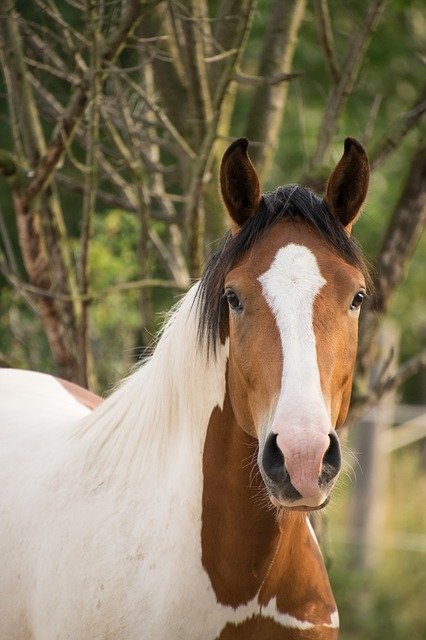
History
As far as the North America’s go, the Paint horse was first introduced in the early 1500s when Spanish conquistadors brought over a new and flashy breed. Most notably was the stallion owned and bred by Spanish explorer Hernando Cortes, who infamously displayed a two-tone sorrel coloration that quickly became popular among Westerners and Native Americans. These original horses were believed to be a mixed breed with Barb, Andalusian, and Arabian traces. As many history books and legends will suggest, around the 1800s, the Paint horse became a hot commodity within the American Indian tribes.
The Paint Horse & Native Americans
After their introduction to the North Americas, many found themselves freely roaming the great plains of the continent, conveniently catching the eye of the neighboring tribes. This human-to-horse relationship soon began to thrive, as the Indians admired their majestic colorings, outstanding strength and agility, and perfectly suited temperament to join the tribal family. Many Indian’s believed that these creatures were a gift from their ancestral gods, containing magic-like capabilities.
The Introduction of The Thoroughbred
As history continued, British colonists and their prestigious breeding habits added a new lineage to the Paint horse family tree. The Thoroughbred line was now mixed in, allowing for the breed to enable sturdier work ethics, in combination with excellent tactical thinking skills. As a result of this breed crossover, while many horses remained true to their colorful ways, some reverted to a solid coloration.
The Introduction of The American Quarter Horse To The Gene Pool
By 1940, the American Quarter Horse was the new addition to the Paint gene pool. Of the many genetic influences, this crossover is arguably the most beloved within the United States. This Paint Quarter horse made great waves throughout the equine industry, allowing the breed to become a versatile ranch horse with cow sense and short-distance endurance. That same year, the American Quarter Horse Association was formed, but any Paint Quarter horse was not welcomed within the registry due to the nature of their coloring. This mentality was quickly aborted as the breed’s admiration continued to grow with exponential powers.
The Foundation of The APHA
The decision to combine The American Paint Quarter Horse Association and The American Stock Horse Association (ASHA) was put forth to act as the breed’s representation. By 1962, the two conjoined and formed what is now known as the American Paint Horse Association.
The association was formerly funded by a woman named Rebecca Lockhart, who, with the help of friends and family, committed her life to preserve the breed’s unique coloring and stocky build. The association was initially addressed as the American Paint Stock Horse Association, named for the organization’s intentions.
In 1962, the first APHA pedigree was reported by Ms. Lockhart, a three-year-old black tobiano stallion owned by William Gooch of Fort Worth, Texas. His name was Bandit’s Pinto. This stallion would mark the beginning lineage of over 2,500 Paint colts within the APHA registry. That same year, the association had accumulated approximately 150 new members and 250 new horses to add to their roster.
Originally located in Fort Worth, Texas, the association moved to Amarillo before heading back to post. In Fort Worth, over 1,269 horses, 1,005 members, and six regional clubs were added to the registry’s documentation by 1964. This year hosted the association’s first National Show, paving the way for the now popular World Championship Paint Horse Show.
Today, the APHA registers an upwards amount of 30,000 horses a year, and the champion show allows lucky winners to walk away with over one million dollars in cash annually.
The Many Characters of The Modern Paint Horse
As Paints continue to show a great deal of adoration within the equine industry, lets us take a look into the many colorful characters these creatures possess.
The Tobiano
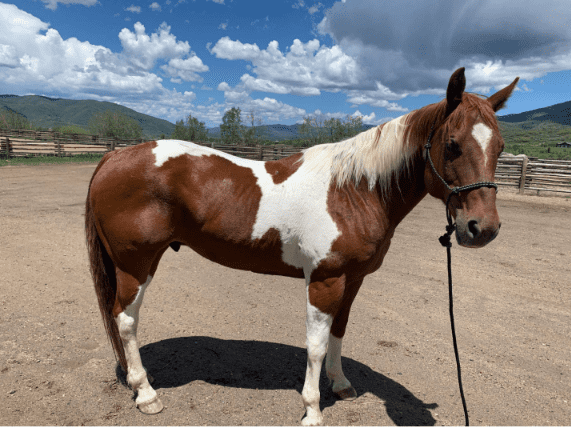
This coat color variation usually involves only two colors, traditionally a light and darker blend. In this variation, the darker color tends to cover one or both of the horse’s flanks. A tobiano’s legs are most commonly all white from the hock and below. Their head tends to have a pattern similar to that of a solid-colored horse, with one color covering almost the face area’s entirety.
The Overo
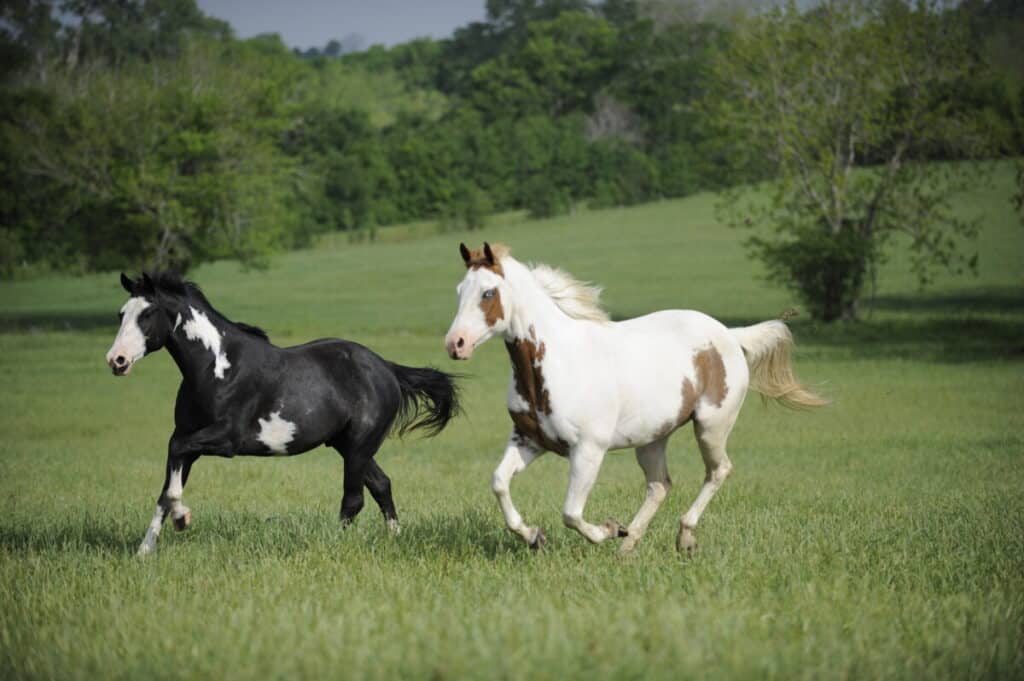
The overo horse usually contains two to three colors, ranging from white to brown to black. This coat variation tends to involve the darker coloring of at least one leg, if not all, and the pattern of white is described as irregularly scattered throughout the body. The face markings remain unique to this variation, as they are often seen to be bald-faced, apron-faced, or bonnet-faced. In addition, the tail of an overo tends to be one color, most popularly black or of a darker hue.
The Tovero
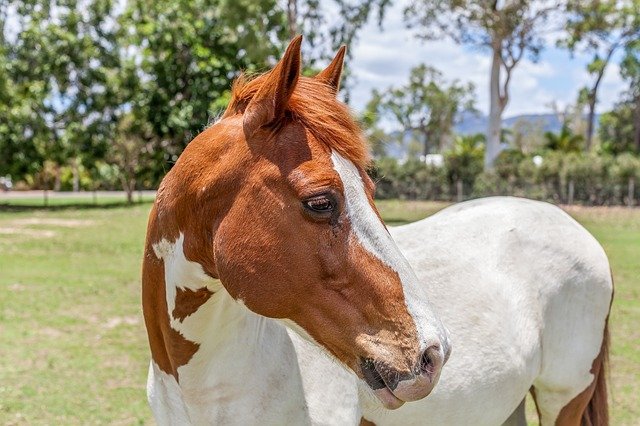
This coat color is generally described by a dark pigmentation surrounding the ear and the upper head extending into the facial region. Uniquely, this horse has either one or both eyes with a blue pigment. Many toveros’ have a dark-spotted chest that might extend up into the neck region. Varying flank spot sizes appear on these coat variations, combined with smaller spots stretching across the barrel area.
The Sabiano
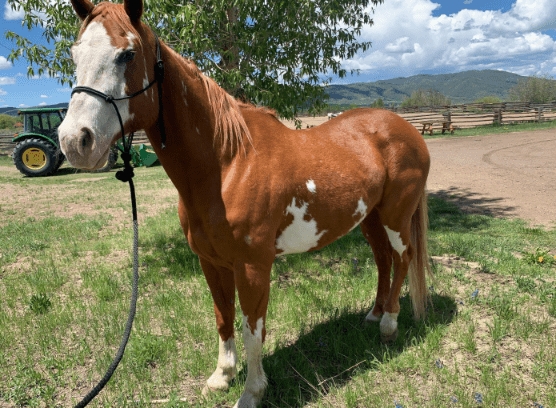
This color pattern is mainly characterized by its white spotting coordination and two to all legs covered in a white hue. Many sabino’s look as though they are roaning out white from the belly upwards with a pretty standard white blaze running down the face.
Splashed White
This fun and flashy coloring pattern make your horse look like he or she has been dipped in white paint like an ice cream bar during summer. The white coloring generally stems from the undercarriage extending through the neck to the facial area. Many splashed one or two blue eyes can characterize white paints, in addition to having a bald-faced complexion. For an Example of Splashed White, Check Out our Piece written by International Reining Athlete Bernard O’Sullivan, The Genetics of Breeding Colour Part 1- This Article gives many examples of the amazing colours patterns below;
Medicine Hat
This intriguing coloration was brilliantly named for the appearance of darker ears or a darker upper facial variation on a seemingly all-white horse. The one expectation to their light complexion is the patterning of a shield appearance across their chest. Dating back to the early 1800s, Native Americans believed these patterns contained spiritual protection while riding into battle. A fairly good example of a Medicine Cap, can be seen in the Picture above of the two horse running at pasture.
Whether you are looking for your next great family horse or simply want to admire the beautiful arrangement of colors upon their backs, the American Paint Horse can make any barn shine a little brighter.
This Article was originally published in the June 2021 Issue of Irish Sport Horse Magazine. Please Note That Pictures have been credited to the sources, and remain the property of same.
If You enjoyed this piece by Jordan, you can check out her piece on the American Quarter Horse below;
To Find out more about the wonderful American Paint Horse, Check out the APHA Website Here>>
